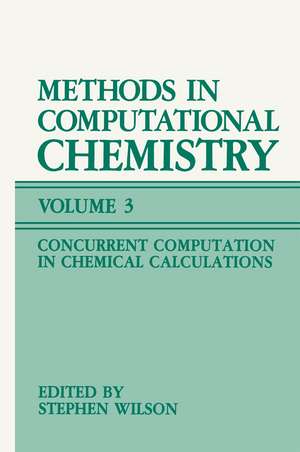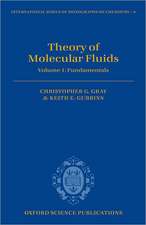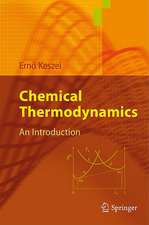Methods in Computational Chemistry: Volume 3: Concurrent Computation in Chemical Calculations
Editat de Stephen Wilsonen Limba Engleză Paperback – 6 dec 2013
| Toate formatele și edițiile | Preț | Express |
|---|---|---|
| Paperback (3) | 385.62 lei 6-8 săpt. | |
| Springer Us – 6 dec 2013 | 385.62 lei 6-8 săpt. | |
| Springer Us – 26 sep 2011 | 387.96 lei 6-8 săpt. | |
| Springer Us – 8 iun 2013 | 948.61 lei 6-8 săpt. | |
| Hardback (3) | 644.82 lei 6-8 săpt. | |
| Springer Us – 29 iun 1992 | 644.82 lei 6-8 săpt. | |
| Springer Us – 31 ian 1993 | 954.14 lei 6-8 săpt. | |
| Springer Us – 29 noi 1987 | 954.93 lei 6-8 săpt. |
Preț: 385.62 lei
Nou
Puncte Express: 578
Preț estimativ în valută:
73.80€ • 76.61$ • 61.53£
73.80€ • 76.61$ • 61.53£
Carte tipărită la comandă
Livrare economică 22 martie-05 aprilie
Preluare comenzi: 021 569.72.76
Specificații
ISBN-13: 9781461574187
ISBN-10: 1461574188
Pagini: 264
Ilustrații: XIII, 247 p. 50 illus.
Dimensiuni: 152 x 229 x 14 mm
Greutate: 0.36 kg
Ediția:1989
Editura: Springer Us
Colecția Springer
Locul publicării:New York, NY, United States
ISBN-10: 1461574188
Pagini: 264
Ilustrații: XIII, 247 p. 50 illus.
Dimensiuni: 152 x 229 x 14 mm
Greutate: 0.36 kg
Ediția:1989
Editura: Springer Us
Colecția Springer
Locul publicării:New York, NY, United States
Public țintă
ResearchCuprins
1. Relativistic Atomic Structure Calculations.- 1. Methods of Relativistic Atomic Structure Calculation.- 2. Basic Formulas of Relativistic Atomic Structure Theory.- 3. Implementation of the Theory.- 4. Outlook.- References.- 2. Relativistic Molecular Structure Calculations.- 1. Introduction.- 2. Relativistic Molecular Quantum Mechanics.- 3. Relativistic Independent Electron Models.- 4. Electron Correlation.- 5. The Algebraic Approximation.- 6. Conclusions and Future Prospects.- References.- 3. The Relativistic Effective Core Potential Method.- 1. Introduction.- 2. The Effective Core Potential Method.- 3. Relativistic Quantum Mechanics.- 4. The Relativistic Effective Core Potential.- 5. Applications.- 6. Conclusions.- References.- 4. Semiempirical Relativistic Molecular Structure Calculations.- 1. Introduction.- 2. Methods.- 3. Applications.- Appendix A: Where to Find REX Parameters.- Appendix B: The ITEREX 87 Program.- References.- 5. Relativistic Many-Body Perturbation Theory.- 1. Introduction.- 2. Fundamental Problems.- 3. Electron Correlation Methods.- 4. Diagrammatic Many-Body Perturbation Theory.- 5. Relativistic Basis Sets.- 6. A Comparison of Methods.- 7. Basis-Set Studies of Relativistic Many-Body Perturbation Theory.- 8. Summary and Conclusions.- References.- of Previous Volume.- Author Index.
Descriere
Descriere de la o altă ediție sau format:
When, forty years ago, as a student of Charles Coulson in Oxford I began work in theoretical chemistry, I was provided with a Brunsviga calculator-a small mechanical device with a handle for propulsion, metal levers for setting the numbers, and a bell that rang to indicate overflow. What has since come to be known as computational chemistry was just beginning. There followed a long period in which the fundamental theory of the "golden age" (1925-1935) was extended and refined and in which the dreams of the early practitioners were gradually turned into hard arithmetic reality. As a still-computing survivor from the early postwar days now enjoying the benefits of unbelievably improved hardware, I am glad to contribute a foreword to this series and to have the opportunity of providing a little historical perspective. After the Brunsviga came the electromechanical machines of the late 1940s and early 1950s, and a great reduction in the burden of calculating molecular wavefunctions. We were now happy. At least for systems con taining a few electrons it was possible to make fully ab initio calculations, even though semiempirical models remained indispensable for most molecules of everyday interest. The 1950 papers of Hall and of Roothaan represented an important milestone along the road to larger-scale non empirical calculations, extending the prewar work of Hartree and Fock from many-electron atoms to many-electron molecules-and thus into "real chemistry.
When, forty years ago, as a student of Charles Coulson in Oxford I began work in theoretical chemistry, I was provided with a Brunsviga calculator-a small mechanical device with a handle for propulsion, metal levers for setting the numbers, and a bell that rang to indicate overflow. What has since come to be known as computational chemistry was just beginning. There followed a long period in which the fundamental theory of the "golden age" (1925-1935) was extended and refined and in which the dreams of the early practitioners were gradually turned into hard arithmetic reality. As a still-computing survivor from the early postwar days now enjoying the benefits of unbelievably improved hardware, I am glad to contribute a foreword to this series and to have the opportunity of providing a little historical perspective. After the Brunsviga came the electromechanical machines of the late 1940s and early 1950s, and a great reduction in the burden of calculating molecular wavefunctions. We were now happy. At least for systems con taining a few electrons it was possible to make fully ab initio calculations, even though semiempirical models remained indispensable for most molecules of everyday interest. The 1950 papers of Hall and of Roothaan represented an important milestone along the road to larger-scale non empirical calculations, extending the prewar work of Hartree and Fock from many-electron atoms to many-electron molecules-and thus into "real chemistry.















